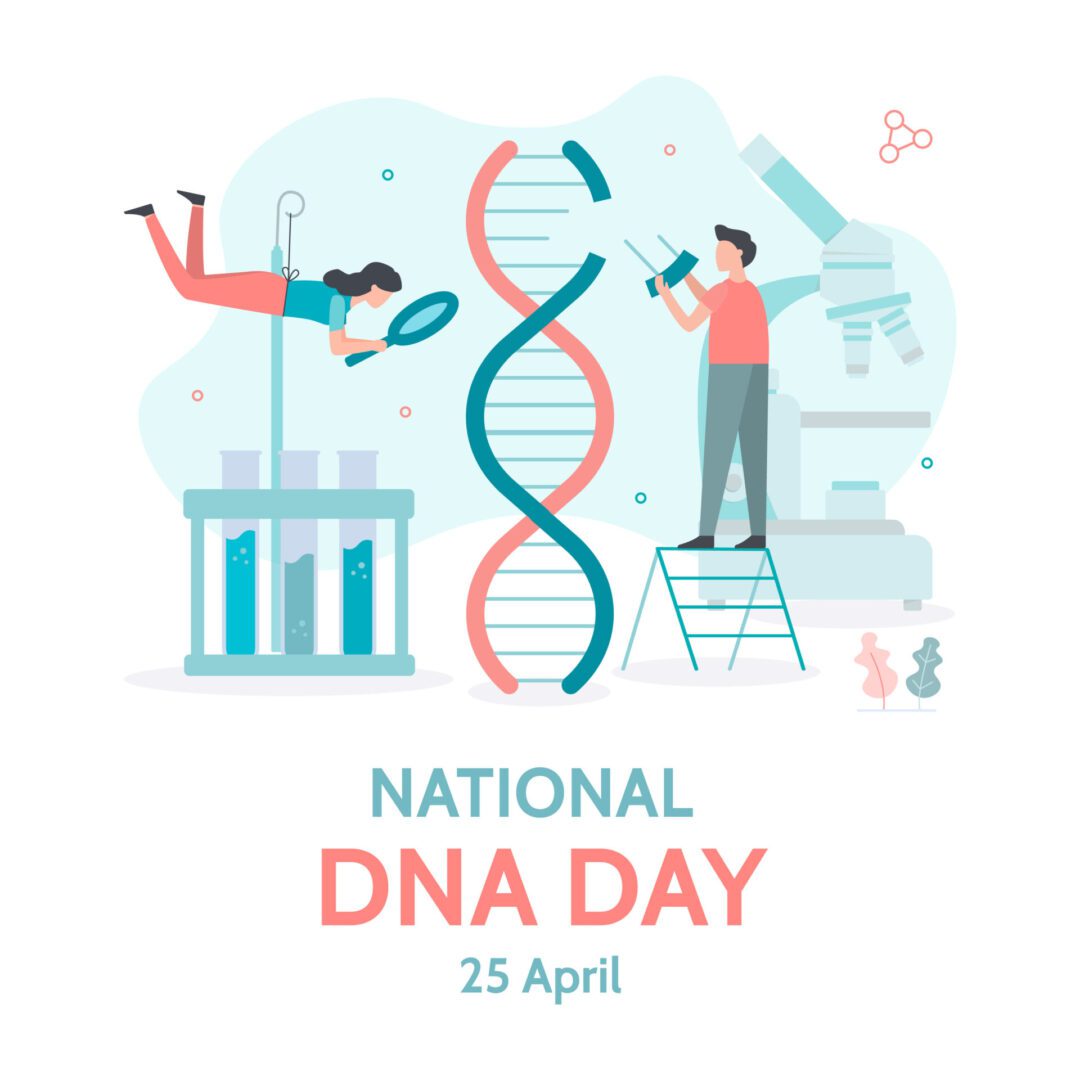Search by Color or Cause


April 25 is National DNA Day. National DNA Day celebrates two landmarks. The first is the 20th anniversary of the Human Genome Project’s completion. The second is the 70th anniversary of the discovery of the DNA double helix.
The National Human Genome Research Institute (NHGRI) is a leader in the celebration of National DNA Day. Since 2003, it has brought students, educators and the general public together on April 25. This day celebrates the completion of the human genome project in 2003. It also celebrates the discovery of the double helix in 1953. National DNA Day’s mission statement highlights its vision and purpose.
Mission Statement:
National DNA Day is a global movement to mobilize, energize and empower communities, educators and students to innovate, collaborate and discover the promise of our shared humanity and connection to the natural world.
Two colors represent National DNA Day. They are green, or the combination of blue and green.
National DNA Day commemorates the successful completion of the Human Genome Project in 2003. It also commemorates the discovery of DNA’s double helix in 1953. The National Human Genome Research Institute (NHGRI) began celebrating DNA Day annually on April 25. This was after the 108th Congress passed concurrent resolutions designating it as DNA Day. The goal of National DNA Day is to offer students, teachers, and the public an opportunity to learn about and celebrate the latest advances in genomic research. It encourages all to explore how those advances impact their lives. NHGRI encourages organizations to host yearly events celebrating DNA Day from January through May.
Your genome is the operating manual that contains all the instructions that helped you develop from a single cell into the person you are today. It guides your growth, helps your organs do their jobs, and repairs itself when it becomes damaged. And it’s unique to you. The more you know about your genome and how it works, the more you’ll understand your own health. This helps make informed health decisions.
The Human Genome Project (HGP) is one of the greatest scientific feats in history. The project was a voyage of biological discovery. It was led by an international group of researchers looking to comprehensively study all of the DNA (genome) of a select set of organisms. Launched in October 1990 and completed in April 2003, the Human Genome Project’s signature accomplishment, generating the first sequence of the human genome, provided fundamental information about the human blueprint. This has since accelerated the study of human biology and improved the practice of medicine.
The history of National DNA Day dates back to 2003, when the Human Genome Project (HGP) was declared complete. The project, which was an international scientific collaboration, had the goal of determining the base pairs that make up human DNA. The goal was also to identify all of the genes in the human genome.
The results of the project revealed that the human genome is not a single, definitive sequence. Instead, it is a mosaic of different parts of DNA that have been pieced together to create a complete sequence for each individual chromosome. This led to the development of programs such as 23&Me and Ancestry, which allow people to discover their family’s history through their DNA.
In 2003, the Senate and House of Representatives unanimously proclaimed April 25 as National DNA Day and April as Human Genome Month. This designation marked the 50th anniversary of the publication of James Dewey Watson’s paper announcing the discovery of the molecular structure of DNA. Watson, Crick, and Wilkins’ work laid the foundation for modern genetic science and paved the way for the development of diagnostic tools and drugs.